
|
Welcome to - Lew's Model Boats - and more! |
go to Home Page |
| LewsModelBoats.org is not a commercial web site. Lew is a scale model builder/hobbiest (model boats and more). Views on this web site are opinions of the author and not driven by any commercial entity. Opinions are welcome - by mailing Lew (see contacts). © Copyright 2024 Lew's Model Boats. Disclosure: This Lews Model Boats do not have any financial ties to any company, political affiliation nor any other subsidy and has no gains from these and any other person(s). Lews Model Boats and this site is purely for the enjoyment of its viewers and others who enjoy this hobby. |
Civil War Gunboats (N.Y.C. ferry conversions)
Section 3 - Research for Modeling
Section 3 - Research for Modeling
There is perhaps only one scale model of a ferry-gunboat type that can be built
based on photographic information only. Unfortunately,
with the conflict in identifying by name several of the better
photos, the best option boat to model might be unnamed.
Maybe sometime in the future more information will become
available. For now let us look at the one that has the most data and photographs.
This is most likely not the USS Commodore Perry, but probably the Commodore Morris and/or the Commodore
McDonough. Another possibility is the Commodore Read, which was 27-feet longer and 118 tons heavier than the Morris
and Read
Lets start off with the data and dimensions:
The Commodore Perry was built in 1859 by Stack and Joyce for Williamsburg Ferries (N.Y.). At 512 tons, she was 143 feet long, 33 feet beam, and a draft of 12 feet. The Commodore Barney has the same dimensions and displacement as the Commodore Perry, and was also built for Williamsburg Ferries, but a different builder: by Perrine, Patterson.
Commodores Jones, McDonough, and Morris were built for Union Ferry Company. The Jones, built in 1863, displaced 542 tons, 154 feet long, 32 feet beam, and a draft of 11 feet. The Morris and McDonough, built in 1862, displaced 532 tons, was 154 feet long, 32-1/2 feet beam, and a draft of 12 feet. The Read, built in 1857, displaced 650 tons, was 179 feet long, 33-1/2 feet beam, and adraft of 13 feet.
Next, lets look at the matching photos and drawing:

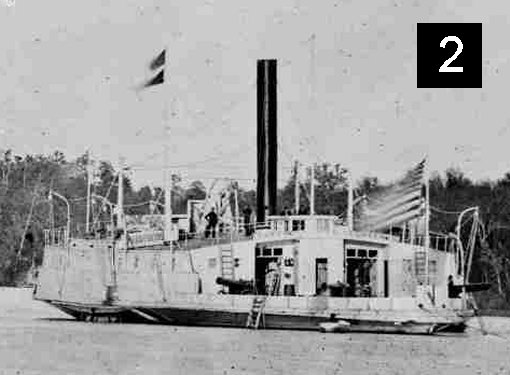
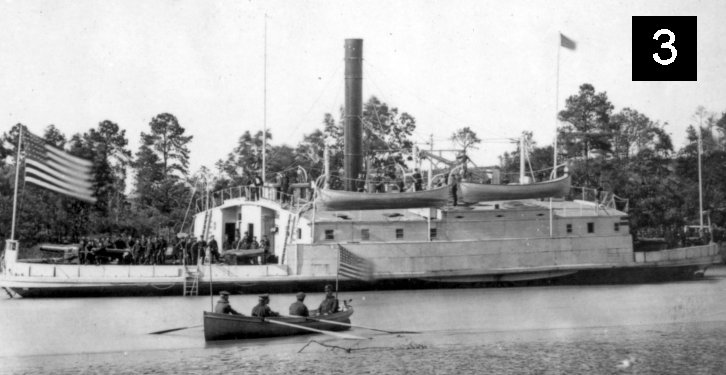
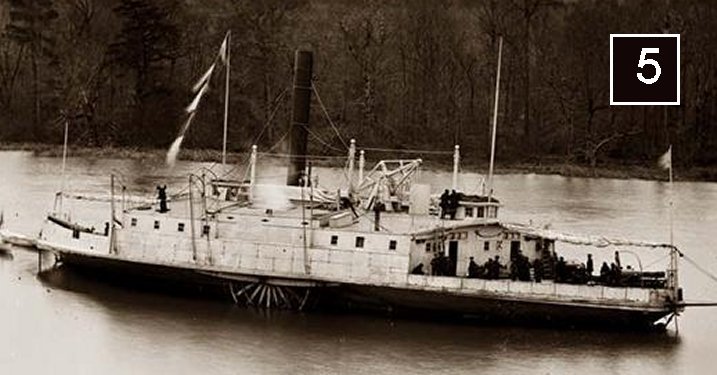
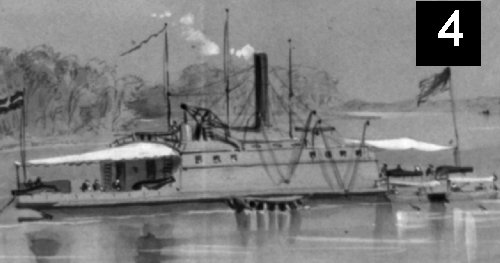
As a scale modeler, we are treading on thin ice here. None of us like to build a scale model that might not be to scale. So, a warning: If we really want to proceed here we need to understand that much of the data could be wrong or no to the correct dimensions. On the flip side, what choice do we have?
Photos 1, 2 & 3 seem to be a match. Photo 5 and drawing 4 area a close, but not exact match. Although the first three don't completely match 4 & 5, they are helpful in several ways.
Considering these photos are about 150 years old, they do reveal a lot of information. Unfortunately, no photos of the under-hull exist. We need to look at other boats of the period.
Several years ago, a gentleman made a pattern for card models of the boat in these photos. I proceeded to partially build the card model which turned out to be about five inches long. I then photographed to model at about the same angle as two of the photos above were taken, then compared the results. Next, we will look at the comparisons.
Card Model built as a test:
Here I started making the card model available on the internet. Check the shape comparisons to two of the original photos. Some distortion could be caused by the differences in the focal length of the old and modern camera lenses.
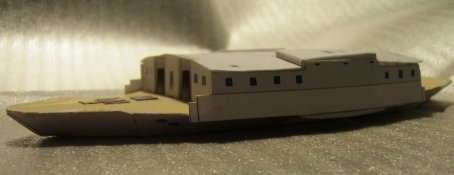
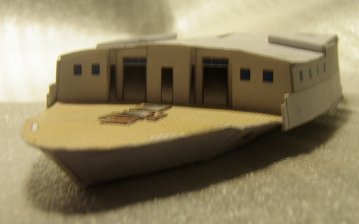


Looking at the Hull:
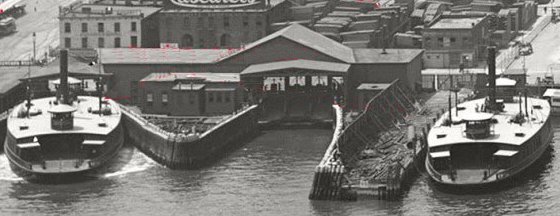
In this section we will look at the hull. (All of the photos so far show only that above the water line.)
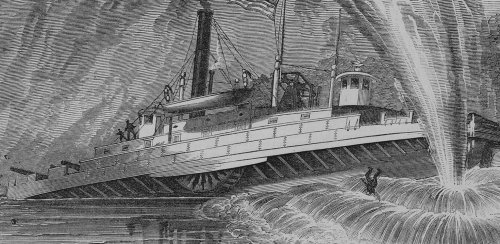 Next is the hull above the waterline. The hull does not
come over to the gunwales, especially mid-ships where the side-wheels
are located (and fore/aft of them). It is hard to see in most of the
photographs, but is quite well indicated in the drawing of the torpedo
exploding under the USS
Commodore Barney
(right), there were diagonal bracing to support the perimeter of
the deck.
Next is the hull above the waterline. The hull does not
come over to the gunwales, especially mid-ships where the side-wheels
are located (and fore/aft of them). It is hard to see in most of the
photographs, but is quite well indicated in the drawing of the torpedo
exploding under the USS
Commodore Barney
(right), there were diagonal bracing to support the perimeter of
the deck.
As for the hull under the waterline, the ferries were described as "flat bottomed." Most likely they did not have a hard chine (side to bottom around the bottom of the hull), but that of a rounded chine (far right in sketch).
Rudder or rudders? Mentioned elsewhere on this site is the damage report on the USS Hunchback. It stated that one of her "rudders..." was damaged, which leads me to believe that she had two, one each end.
Updated: April 60, 2011